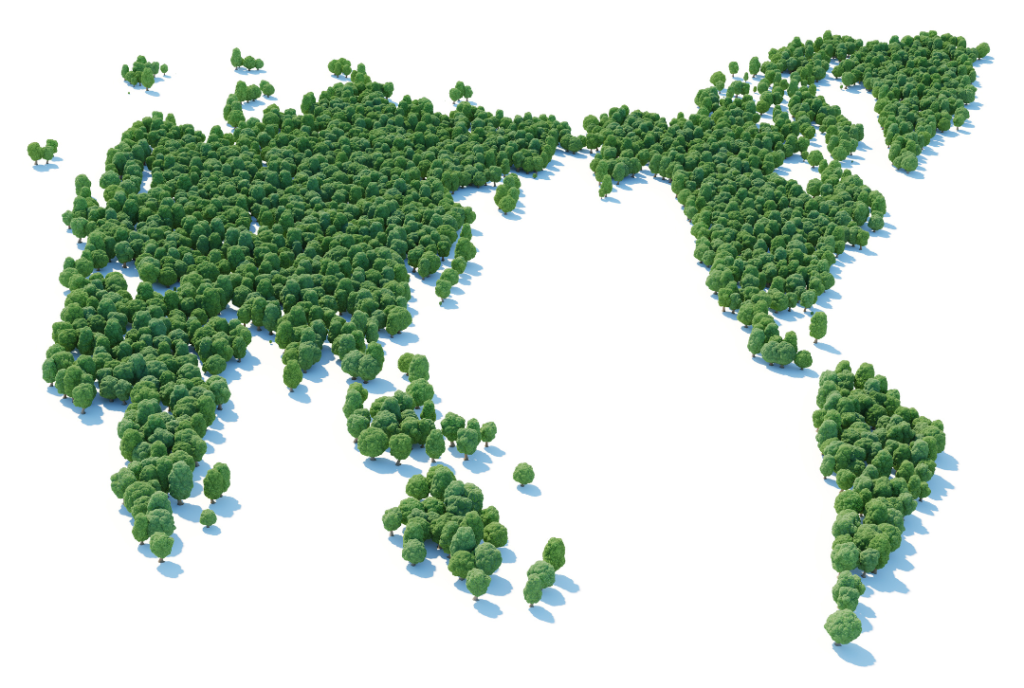Carbon dioxide (CO2) is an odorless gas that is important to life on Earth. CO2 is also known as a greenhouse gas; an excessive concentration of which disrupts the natural regulation of temperature in the atmosphere and causes global warming and climate change. Let’s take a look at the countries with the highest carbon emissions around the world.
A History of Carbon Emissions & Causes
Each year more than 36,000 million tons of CO2 are released into the Earth’s atmosphere. Most of these gases come from the use of fossil fuels, the generation of energy through non-renewable channels and polluting human activities, such as deforestation and agriculture.
The concentration of CO2 has especially increased as a result of the industrial revolution and exponential growth in manufacturing activities around the world. The concentration of carbon emissions in the atmosphere reached 407.8 parts per million (ppm) in 2018, which represents almost a 47% higher level than the pre-industrial period, before 1750.
Cement, in particular, and natural resources extraction and processing in general, contribute massively to CO2 emissions. A recent report found that the majority of carbon emissions are created by such processes, even before any fuel is burned.
Resource extraction has more than tripled since 1970 and continues to accelerate, even though the population has only doubled in that time, according to the United Nations’ Global Resources Outlook 2019. Perhaps it is no surprise that the countries emitting the most CO2 are also often among the countries that control the world’s oil.

Top 10 Polluters By Country
The most carbon emission pollution comes from just a few countries. China generates around 28% of all global emissions, while the United States is responsible for almost 14%. Below are the top 10 countries that produce the most emissions, measured in billions and millions of tons of CO2 in 2021.
-
China, with more than 9.04 billion tons of CO2 released.
-
United States, with 5 billion tons of CO2
-
India, with 2.07 billion tons of CO2
-
Russia, with 1.47 billion tons of CO2
-
Japan, 1.14 billion tons of CO2
-
Germany, 729.77 million tons of CO2
-
South Korea, 585.99 million tons of CO2
-
Iran, 552.40 million tons of CO2
-
Canada, 549.23 million tons of CO2
-
Saudi Arabia, 531.46 million tons of CO2
Reducing Carbon Emissions
Developed countries generally have higher carbon footprints. Some ways that countries can reduce their carbon emission pollution include:
-
Using electricity from renewable energy sources
-
Improving energy efficiency
-
Promoting biofuels in transportation
-
Reducing CO2 emissions from vehicles
-
Recovering gases from landfills and reduce fluorinated gases
Individuals can also reduce their carbon footprint by:
-
Choosing to walk, bike, carpool, or use public transportation instead of driving
-
Using reusable containers or bottles instead of individual plastic ones
-
Eating less red meat

Another Option: Carbon Offsetting
What is it? A carbon offset is an amount of money you can pay for a project that reduces greenhouse gases somewhere else. If you offset one ton of carbon, the offset will help capture or destroy one ton of greenhouse gases that would otherwise have been released into the atmosphere. Offsets also promote sustainable development and increase the use of renewable energy.
The carbon offset company offers individuals *and companies* easy options to offset your carbon emissions to live and grow a carbon-neutral lifestyle or brand.
We partner with individuals and businesses to plant trees across the globe! Tree planting reaches far beyond carbon reduction. They provide homes for wildlife, and in areas like Madagascar, the crab and fish populations provide additional food sources and income for the locals.
In addition to the environmental benefits, we employ people from local communities. This extends our impact far beyond environmentalism. These are the building blocks of a long-lasting and sustainable restoration project.

